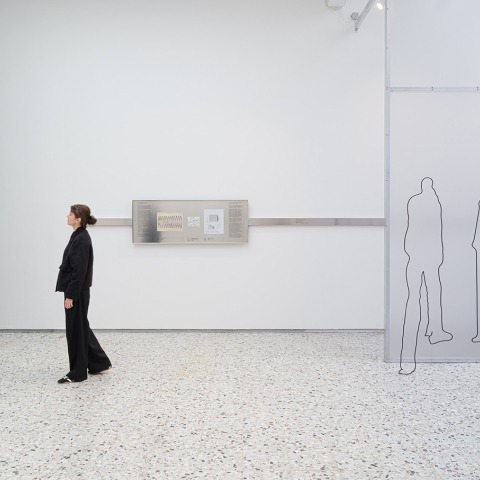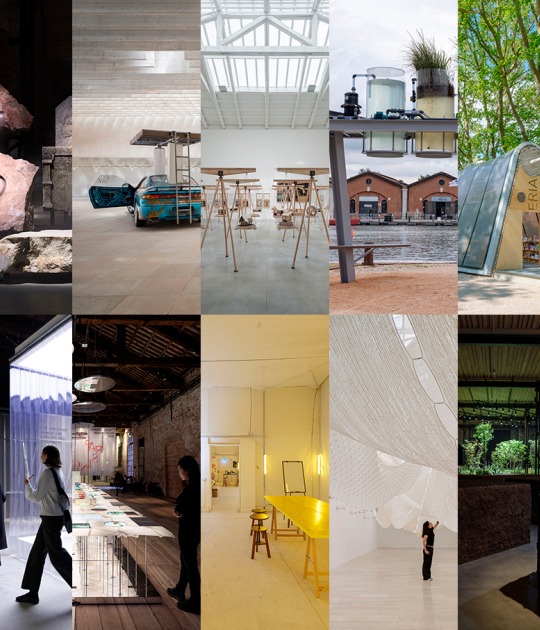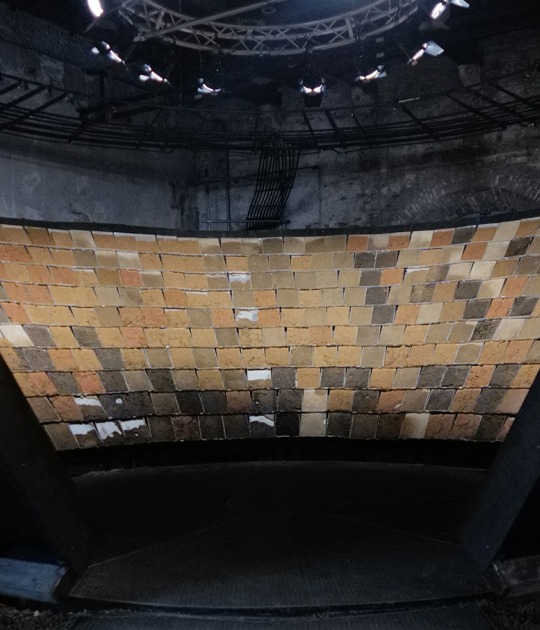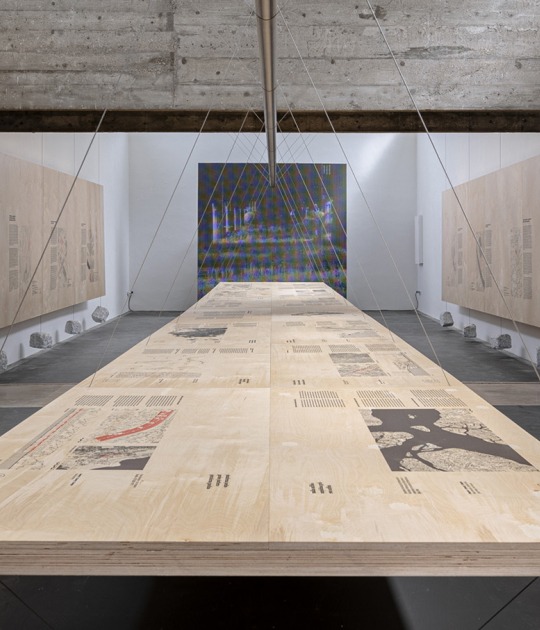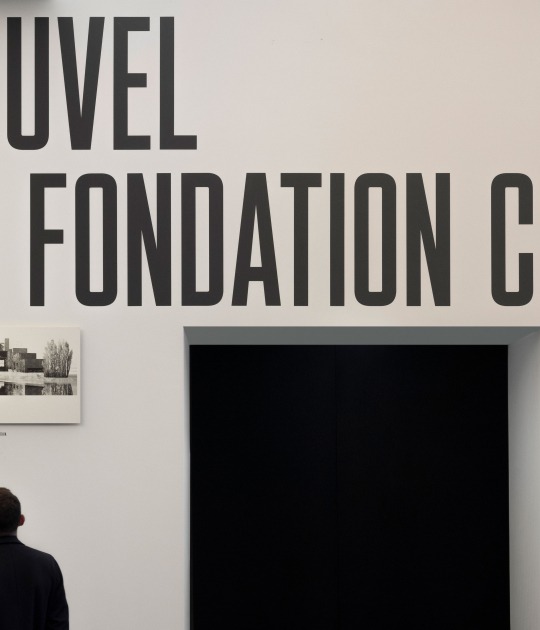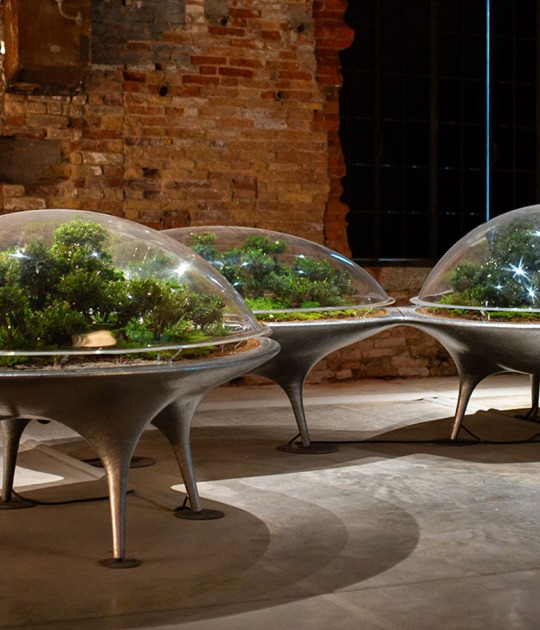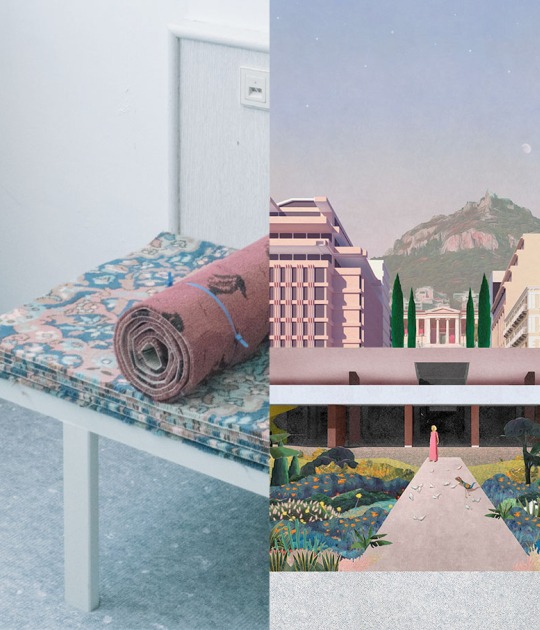HUMAN SCALE explores the diverse forms of intelligence—conceptual, historical, technological, artistic, and emotional—embedded in architectural drawing as a medium for thinking and shaping built space.
"HUMAN SCALE is centered on the idea of 'Collective Intelligence,' particularly in how we can critically revisit 20th-century architecture through the lens of the human-as-sign found in architectural drawings. The goal is to uncover new ways of reimagining existing buildings and adapting them for 21st-century life. By interrogating different utopian visions that claim to place people at the core, the exhibition seeks to restore a direct, humane, and equitable relationship with architectural heritage and its surrounding environment."
Cosmina Goagea curator.
Since 2017, artist Vlad Nancă has been developing a body of work that lies between drawing and sculpture, drawing inspiration from the scaled human figures in architectural renderings. By enlarging these figures to human size, Nancă sees the act as a form of "liberation" from the confines of the drawing, emphasizing the presence and significance of people in architecture.

Romanian Participation at the La Biennale di Venezia. Photograph by YWP studio / Pavel & Petruța.
Inside the Pavilion, a curated selection of drawings arranged chronologically outlines a condensed social history of architecture imagined or built in Romania during the 20th century. These works reflect key moments, ideologies, schools of thought, and debates. In dialogue with this historical material are ten life-sized silhouettes created by Vlad Nancă, extracted from original architectural drawings. With Muromuro Studio’s spatial design, these figures are reframed as interpretive lenses, prompting visitors to reflect on the role of humans as a unifying element in architectural thinking.
The exhibition broadens its scope through a display of 16th- to 18th-century maps in which human presence is conveyed allegorically. These maps use drawing as a rhetorical device, a way to express political and social power. A large ceramic map by Nancă further deepens this connection between architecture and cartography.
“Humans are the constant in architectural drawings, bridging time. By examining how people have been represented throughout the 20th century, we aim to highlight their enduring relevance and central role in architecture today, encouraging visitors to reimagine how the built environment serves the people who inhabit it.”
Artist Vlad Nancă.

Romanian Participation at the La Biennale di Venezia. Photograph by YWP studio / Pavel & Petruța.
"An immersive environment shaped by large translucent sheets that fill the space. The installation inverts the usual focus: architecture recedes, placing human interaction at the forefront. The walls become a surface for dialogue between drawn silhouettes and the blurred reflections of visitors. Through shifts in scale, focus, and ambiguity, the installation creates a meditative space that encourages visitors to reconsider their relationship to built space and engage critically with architecture’s future.”
Ioana Chifu and Onar Stănescu of Muromuro Studio.
As an extension of the exhibition, the New Gallery of the Romanian Institute for Culture and Humanistic Research becomes a space for research and experimentation. It showcases the documentary foundation of HUMAN SCALE through an expansive archive of 20th-century architectural drawings by Romanian architects. The space is designed for active engagement: a central study table stands between two archival pillars and a decade-by-decade chronological display. Ten enclosed metal frames hinge around a central column, presenting key works in order. A circular library houses more than 300 reproduced drawings in custom folders available for public exploration.
